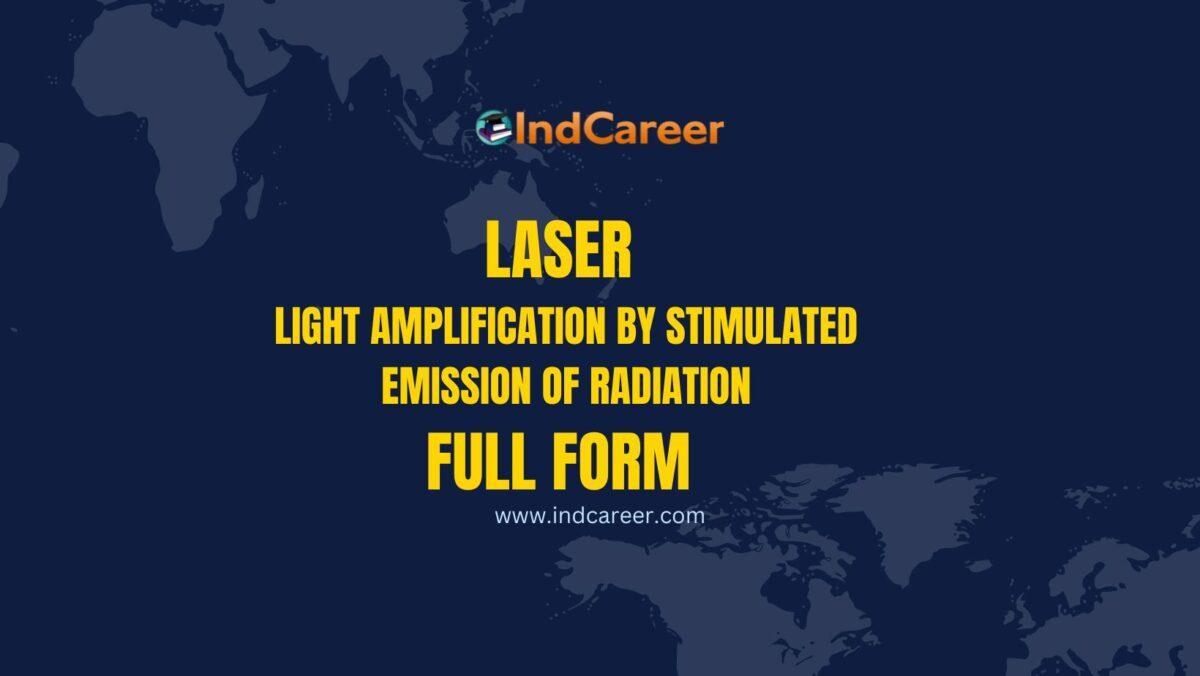LASER Full Form- What is the Full Form of LASER?
In today’s world, LASER technology has become an integral part of various fields ranging from healthcare to manufacturing. However, not everyone may be aware of what the term “LASER” actually stands for. So, let’s dive into the fascinating world of LASER and explore its full form, history, working principles, applications, advantages, and more.
Introduction to LASER
LASER stands for Light Amplification by Stimulated Emission of Radiation. It is a device that emits a coherent beam of light through optical amplification. This unique property of LASER light makes it significantly different from conventional sources of light such as incandescent bulbs or fluorescent lamps. The precision, intensity, and focus of LASER light have led to its widespread use in various fields.
What does LASER stand for?
LASER is an acronym derived from the full form – Light Amplification by Stimulated Emission of Radiation. Each letter represents a key concept that describes the fundamental principles of LASER technology.
History and development of LASER
The journey of LASER dates back to the early 20th century when Albert Einstein laid the theoretical groundwork for stimulated emission. However, it wasn’t until 1960 that Theodore Maiman built the first working LASER device. Since then, LASER technology has evolved rapidly, leading to the development of various types of LASERs for different applications.
Understanding how LASER works
LASERs work based on the principles of stimulated emission and optical amplification. The process involves creating a population inversion within a laser medium, which allows for the emission of coherent and monochromatic light. The light is then amplified and directed through a series of mirrors and lenses to generate a focused beam of intense light.
Applications of LASER technology
LASER technology finds applications in numerous sectors. In medicine, LASERs are used for surgeries, cosmetic treatments, and diagnostic procedures. They are also used in telecommunications, barcode scanning, laser printing, materials processing, cutting-edge research, and entertainment industries. LASERs have revolutionized the way we communicate, manufacture, and explore the world around us.
Advantages and disadvantages of LASER
The advantages of LASER technology include precise control, high energy efficiency, non-contact operation, and the ability to work in extreme conditions. However, LASERs also have their limitations, such as cost, safety hazards if not used responsibly, and the need for specialized knowledge and equipment for maintenance and operation.
The future of LASER technology
The future of LASER technology looks promising. Ongoing research aims to enhance current LASER devices, develop new types of LASERs, and explore novel applications. With advancements in areas like quantum computing and fiber optics, we can expect LASER technology to continue pushing boundaries and revolutionizing various industries.
Conclusion
LASER, which stands for Light Amplification by Stimulated Emission of Radiation, has transformed several domains of human activity due to its unique properties and applications. This remarkable technology has played a crucial role in healthcare, manufacturing, communication, and research. As advancements in LASER technology continue, we can anticipate even greater breakthroughs and impacts in the future.
FAQs
There are various types of LASERs, including gas lasers, solid-state lasers, dye lasers, semiconductor lasers, and fiber lasers. Each type has its unique characteristics and applications.
Yes, depending on the power and exposure, LASERs can be harmful to the eyes. It is crucial to follow safety guidelines and wear appropriate protective eyewear when handling or working with LASERs.
Yes, LASER technology is commonly used for hair removal. LASERs emit light that is absorbed by the pigment in hair follicles, thereby damaging them and inhibiting future hair growth.
LASER scanning involves using a LASER beam to sweep over a target area and measure the distance to create a detailed 3D representation. It is widely employed in applications like topographic mapping, construction monitoring, and virtual reality.
Yes, LASER technology is extensively used for cutting and welding metals due to its precision and high energy density. LASER cutting and welding offer advantages such as minimal heat-affected zones and highly accurate results.
